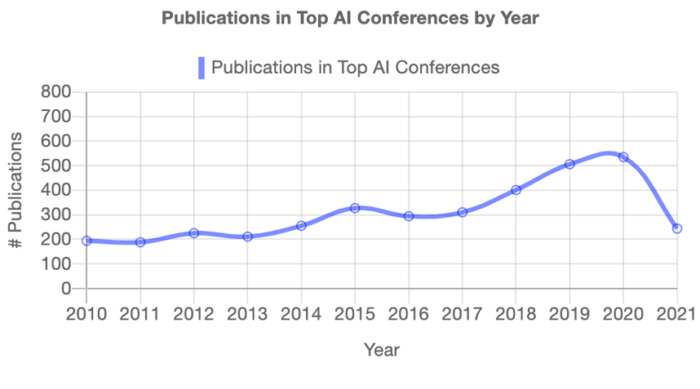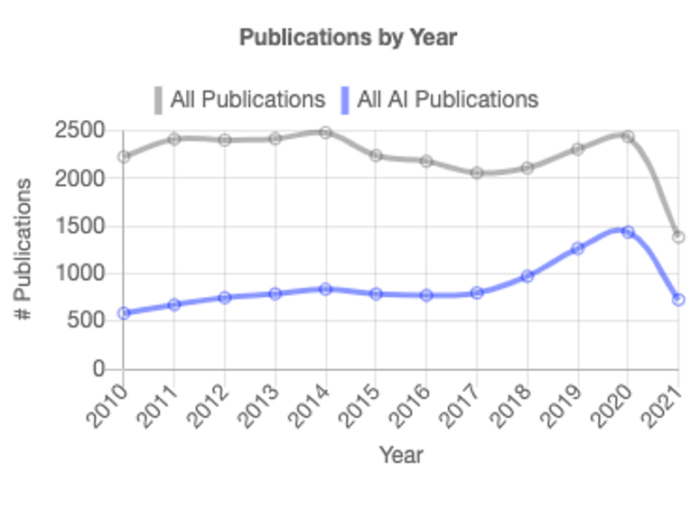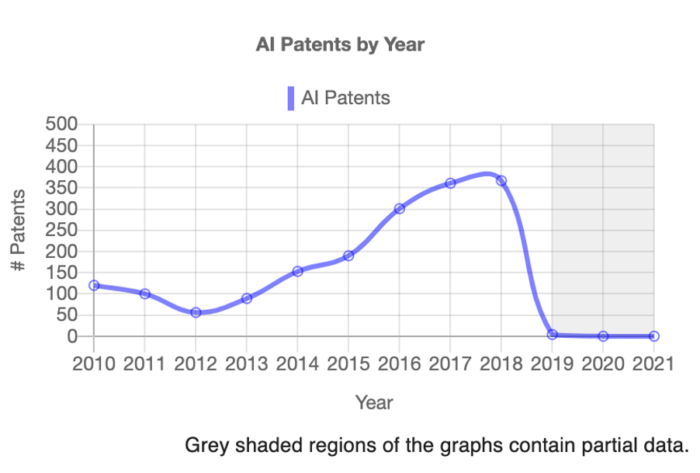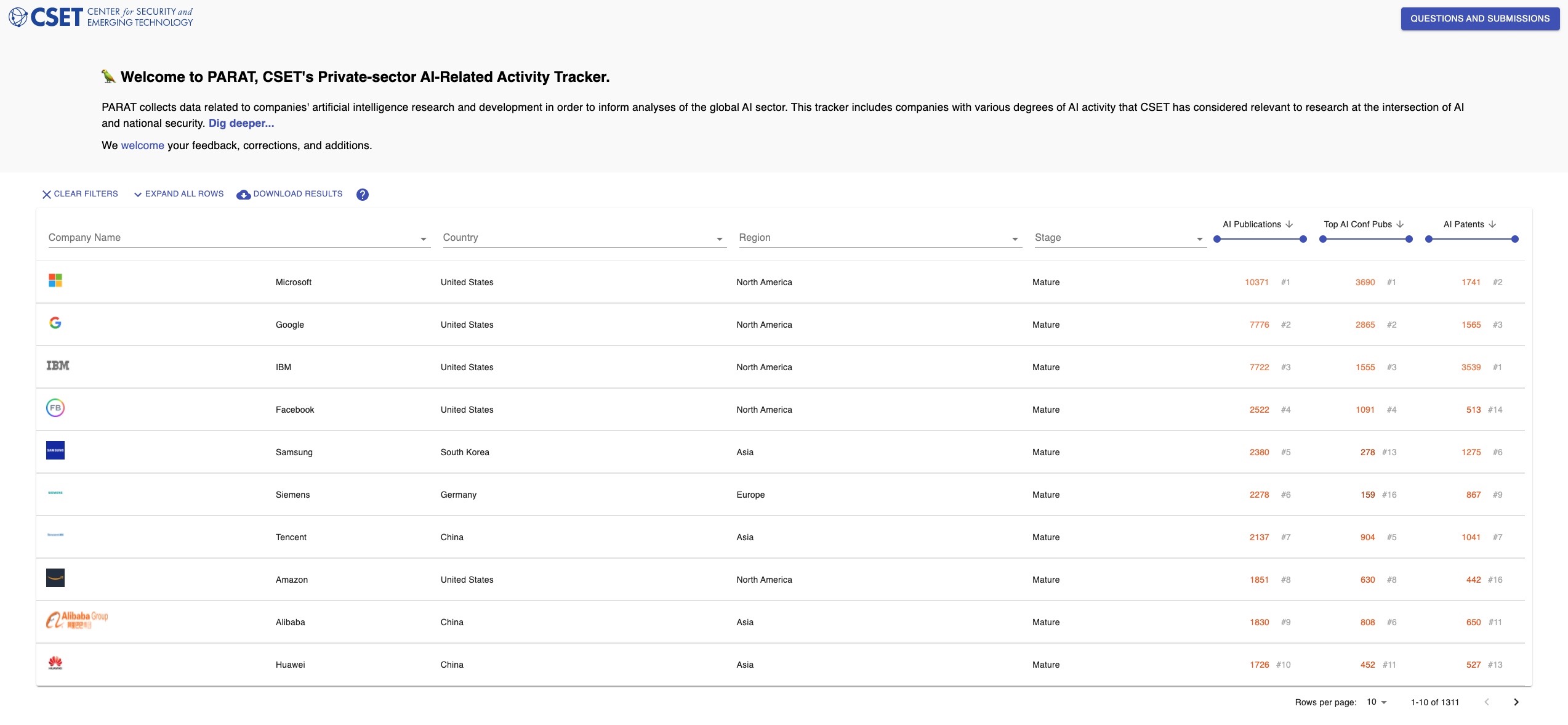In July 2020, CSET researchers analyzed AI publications, patents, and personnel to create a “proof of concept” framework for what constitutes an AI company. Specifically, they combined manual annotation, data on AI patents, publications, conference papers, and Crunchbase company classifications to curate a small collection of AI companies.
Using that conceptual framework, in June 2021, CSET researchers created an interactive tool called “PARAT” (Private-sector AI-Related Activity Tracker). PARAT draws on data from Crunchbase, Digital Science, 1790 Analytics, Digital Science Dimensions, Microsoft Academic Graph, Web of Science, and the Chinese National Knowledge Infrastructure, along with CSET manual annotation.
With PARAT, the user can analyze the following metrics:
- A company’s number of AI publications, based on CSET’s merged corpus and in-house AI classifier;
- A company’s “maturity level,” based on its public trading status, number of employees, and/or last funding round.
The user can look at the overall company rankings according to these metrics, but can also filter by number of AI publications or other metrics. Users can also examine what countries the top companies are based in. To see PARAT, click on this image:
Figure 1. Top results for companies ranked by AI publications, conference papers, and patents
Using PARAT, users can also examine more information about each company of interest, including its subsidiaries, identifiers, Crunchbase profile, Wikipedia summary, and trends in each AI metric over time. This way, users can decide what metrics they deem most important to consider a company to be AI-focused. Once users have set their desired filters, they can also download the data to a local Excel file to analyze.
Figure 2. Detailed view of Microsoft’s PARAT profile




Information on 1,311 companies is available in PARAT, though this list should not be considered an exhaustive count of all AI companies. Rather, the current list is based on data available in Crunchbase and other CSET data sources, which may over-represent certain sub-industries and countries. For example, more than 78 percent of companies in PARAT are based in the United States, highlighting the possibility that more data is available for United States-based companies. Still, PARAT is a useful aid for exploring company rankings based on different AI metrics and comparing companies’ AI-related activity.
The CSET team is developing an expanded second version of PARAT with additional AI metrics and more companies. In the meantime, be on the lookout for PARAT-based analyses in CSET’s newest Snapshot series.

